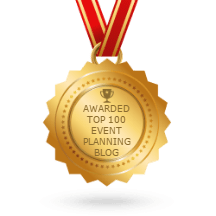As an event marketer, one question you probably get regularly from your leadership team is, “are these events actually paying off?” (or something along those lines). And while interest for events is high at most organizations, the answer to that question can make or break your event budget. That’s where measuring the return on investment (ROI) for events becomes critical. So how do you do that?
Keep reading for six tips that will help you understand and effectively measure your event strategy payoff.
- Understand the basics. Before diving into tips and tactics for measuring ROI, it’s important to understand what event ROI really means. While no two events are the same, there are a few factors to consider when thinking about ROI, such as engagement, lead generation, and brand awareness.
For engagement, you can ask questions such as how many people attended vs. RSVP’d? Or how many conversations did your sales or marketing team have at the event? Gauging attendee engagement can help you understand how well your content was received and if any adjustments should be made moving forward. For lead generation, you want to leverage registration and surveys to capture important demographic information that you can funnel to your sales team for follow-up. Workshop attendance, badge scans, and email marketing sign-ups are all ways you can capture potential new leads for the business. And lastly, events provide a great opportunity to get your organization’s name out there. Track mentions and hashtags on social media to see if your event increased buzz around your brand. - Establish goals. It will be virtually impossible to understand the ROI of your events without first laying out your goals. You’ll want to get input from multiple stakeholders to ensure you’re capturing all of the important goals, and you’ll want to keep them as concrete and as specific as possible. For example, “increase sales” is a nice goal, but is far too ambiguous to be measurable. Get more specific and include numbers and timelines. “Increase sales by 10% by the end of the 4th quarter” is a clearer goal to shoot for and one that you can easily measure.
- Create your measurement strategy. Once you’ve established your goals, you can let them guide you in all of your decision making. Think of them as your north star. Other factors may arise, but ultimately, your focus should be on getting to those goals. When considering how to know when you’ve reached your goals, consider making a list of all the data you’ll need to understand if you’ve met your goals and how you can accurately measure your success (and challenges). Examples of data points to measure include number of attendees, social media activity and sentiment, email clicks and opens, and lead generation.
- Determine what measurement tools to use. Your event marketing platform, CRM, social media metrics, and survey platforms are all great places to start when evaluating measurement tools. For example, the InGo platform offers real data points and social media conversations that can help you determine how much traction your event got, along with who attended and what they thought about the experience. When deciding which tools to use, you’ll want to consider how accurate they are and if they can be integrated into your current systems.
- After the event = more chances to collect data. Once your event is over, you’re probably breathing a sigh of relief and taking a moment to relax. But don’t forget that post-event follow-up is a great opportunity to capture invaluable data. Consider using post-event surveys or polls to gather quantitative and qualitative information to understand what participants thought of your event. You can also take this opportunity to ask how likely attendees would recommend your brand, product, or service to others. Using a scale of 0 -10 can give you a Net Promoter Score and help you identify areas that work well or need improving.
- Drum roll please…calculate your ROI. It’s the moment of truth. You have all of the data and tools you need. It’s time to calculate your event’s ROI! Examining the cost of the event against the outcomes (engagement, leads, opportunities, etc.) will give you your ROI. For example, let’s say you hosted a product launch webinar and there was great interaction among attendees, new leads were in attendance, and a few of them even converted. It’s safe to say that this kind of event would have a much higher ROI than a large-scale in-person conference with no real interactions or outcomes.
ROI doesn’t have to be hard
Measuring the effectiveness of your events is a critical part of your marketing strategy and a task that can be overwhelming. But when you employ tactics such as setting goals, creating a measurement strategy, and finding the right tools, you can make determining ROI a breeze (or at least less of a headache).
And speaking of the right tools, if you’re looking to overcome your biggest event marketing challenges, look no further. Our intuitive and user-friendly platform can help drive engagement and skyrocket attendance. Schedule a demo today to see how we can help.


